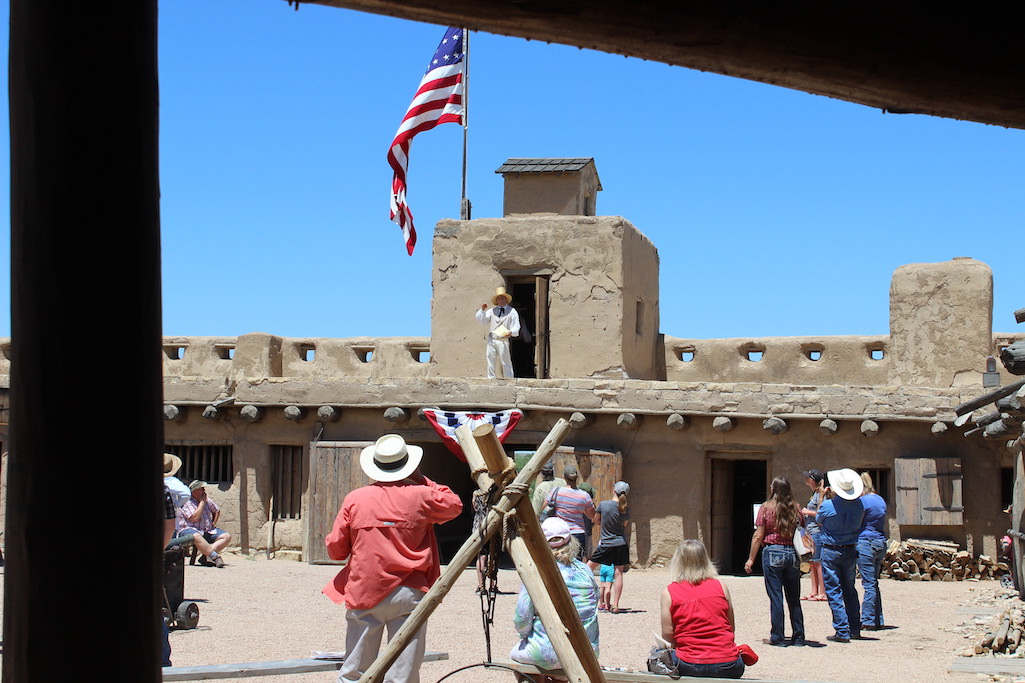
Bent’s Old Fort will continue to have living history programs/NPS file
Operational changes at Bent’s Old Fort National Historic Site, a park in southeastern Colorado that represents an 1840s’ trading post along the Santa Fe Trail, have drawn concerns that the site is losing is living history programming.
“As a living history volunteer for 25 years at Bent’s Old Fort, the actions taken by Superintendent Eric Leonard since he has assumed that capacity in 2023 are taking that extraordinary historic site in the wrong direction — and with alarming speed,” Dennis Chappell, a volunteer from Pueblo, Colorado, wrote in a Facebook post. “Most recently, the decision has been taken to remove all animals, from livestock to chickens and cats, out of the fort by February 9. Prior to that, the rooms on the second story were closed to the public. The fort used to be open 365 days a year. In November, it was decided to only open the fort to the public Friday through Sunday.”
Superintendent Leonard, however, told the Traveler that “Bent’s Old Fort National Historic Site remains committed to preserving Bent’s Old Fort and the story of its significance in America’s history. The park is undergoing a period of transition to manage operations at the fort in a way that allows us to continue to tell the fort’s story while prioritizing public safety and animal welfare.”
The superintendent noted that a 2006 planning document developed by the National Park Service is guiding the current direction being taken at the site.
In that document it was noted that, “at this point the park appears to be at its limit or even beyond in terms of livestock. Even the animals the fort has today are too numerous for the existing staff to care for and use properly. There are also issues with safety since no safety program or training program adequately addresses livestock use. The park needs to come to terms with its livestock issues through the development of a livestock plan and a program that is designed to care for and use an appropriate number of animals.”
While Leonard is looking to reduce the number of livestock kept at the fort year-round in line with the planning document’s guidance, the superintendent said that he is exploring “alternative options, such as leasing livestock during the busier summer season to ensure that animals continue to play a role in the story of the fort.”
The superintendent also said in an email that, “[A]s we work on internal planning, park staff and our dedicated volunteers will continue to connect with the public in engaging and meaningful ways through a combination of living history programs and other interpretive programming as we work to restore access and create new connections to this incredible place.”
Regarding Chappell’s worries that the site would only be open Fridays, Saturdays, and Sundays, Leonard said reduced hours were implemented January 2, but that beginning March 18 the fort would return to full operations seven days a week.
“During this time, park trails and grounds are still accessible seven days a week from 9 a.m. through 4 p.m., excepting holiday closures,” the park staff notes. “The park sees a much-reduced level of visitation during winter months. This schedule allows staff to complete planning and training and creates opportunities for rangers to go into the community visiting schools, libraries, and other community organizations for national park and history related programming. ”
The fort you see today is a replica the Park Service built in 1975-76 on the site of the original fort built in 1833 by brothers Charles and William Bent along with Ceran St. Vrain. The adobe fort was established to trade with Plains Indians and trappers. “The fort quickly became the center of the expanding holdings of Bent, St. Vrain & Company, including Fort St. Vrain to the north and Fort Adobe to the south, along with company stores in Taos and Santa Fe,” according to the Park Service.
The fort also served as a staging area in the summer of 1846 as Colonel Stephen Watts Kearney led the “Army of the West” down the Santa Fe Trail to invade northern Mexico. Dragoons, infantry, Missouri Volunteers and topographical engineers formed the 1,800-man force. They arrived at the fort at the end of July, pausing just a few days, before crossing the Arkansas River into Mexican Territory.





